Text
New from Every Movie Has a Lesson by Don Shanahan: MOVIE REVIEW: The Trial of the Chicago 7
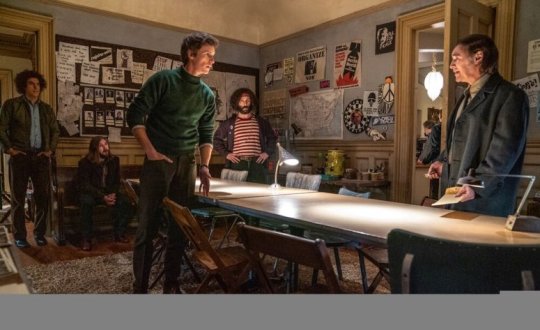
(Image courtesy of Netflix)
THE TRIAL OF THE CHICAGO 7— 5 STARS
Not if, but when, you watch The Trial of the Chicago 7 on Netflix, know that, like all movies based on historical events, what you’re watching is a cherry-picked and tidy two-hour dramatization of legal proceedings that lasted just short of 150 days. Normally when that happens, the dramatic license to make an entertaining product has added any number of embellishments for showmanship’s sake. Folks love the challenge, especially in a courtroom movie, of sniffing out the sugarcoating to wonder “did that really happen?” up and down every narrative peak and valley. The crazy thing is the exact opposite is happening here from Aaron Sorkin.
LESSON #1: THE WHOLE STORY IS ALWAYS MORE THAN WE SEE IN A MOVIE— The courageous antics and challenging tactics seen in the varnished 129 minutes of The Trial of the Chicago 7, are just a fraction of what really transpired in this raucous real-life case. It was wilder than this. It was worse than this. For a single example statistic, the eight defendants and their lawyers racked up 159 counts of criminal contempt. The movie shows you under ten of them.
Watch the acting confrontations, observe the reenacted testimonies, and soak up historical perspective, but then go read further official accounts and records afterward. Throw in the civic importance of Medium Cool as a cherry on top. Call it due diligence. Call it praise confirmation as well.
When you do yourself that favor and make that follow-up effort, you will be astonished at what Sorkin and his fellow creators honed as well as what didn’t make the film. There are plenty of instances where missing so much potential material could be considered a flaw. That’s not here. The Trial of the Chicago 7 loses zero of the peace-branded activism and emboldened essence with its brilliant composition to make a commanding, impressive, and affirming viewing experience.
For those light on their history, the 1968 Democratic National Convention hosted in Chicago was marred by public strife between protest groups and the Chicago Police, much of it caught on cameras while the world was watching. For many, it was the pigs versus the pariahs. When the tear gas cleared and Nixon won the ensuing election, federal conspiracy to incite violence charges were levied by the new U.S. Attorney General John Mitchell (an opening cameo from William Hurt) and his prosecution team Richard Schultz (Joseph Gordon-Levitt) and Tom Floran (character actor J.C. Mackenzie).
The targets were a mix of staunch antiwar influencers deemed “petulant,” “dangerous,” “unprofessional,” “unpatriotic,” and “impolite” by Mitchell. Among them are two duos of large-scale organizers with opposing dispositions. Tom Hayden (Oscar winner Eddie Redmayne) and Rennie Davis (rising actor Alex Sharp) were two straight-laced members of the Students for a Democratic Society (SDS).
The “Mobe” Dems commonly butted philosophical heads with the free-wheeling sarcasm of the “Yippies” (Youth International Party) faction lead by Abbie Hoffman (an invested Sacha Baron Cohen) and Jerry Rubin (newly minted Emmy winner Jeremy Strong of Succession) despite the same tangential aims. The middle man and occasionally neutral voice of reason was co-defendant and conscientious objector David Dellinger (John Carroll Lynch). All were represented in court by civil rights attorneys William Kuntsler (Oscar winner Mark Rylance) and Leonard Weinglass (TV mainstay Ben Shenkman).
The most maligned member of the accused was the co-founder of the Black Panthers himself, Bobby Seale (new Watchman Emmy winner Yahya Abdul-Mateen II), flanked often by Illinois chapter chairman Fred Hampton (the Everywhere Man of Kelvin Harrison Jr.). Detained for another pending criminal charge while the others have made their cushy bail, Seale was trapped silent in this trial without legal representation and disallowed by the Honorable Julius Hoffman (Frank Langella) from cross-examining witnesses or making statements. He was the separate eighth of what became the titular septet.
Fueled in fits and spurts by a peppy score from composer Daniel Pemberton, the back-and-forth arguments of the case trigger expositional flashback sequences of the events before, during, and after the fateful August riots from the various points of view. The spoken details and filmed set pieces are, through the deft editing from Alan Baumgarten (American Hustle), interlaced with the archival parallel footage from the real history. Those splashes of black-and-white violence remind viewers of the gravity behind the potential farce. As the trial drags on, the case presents more and more conflicting purposes and damning blame.
LESSON #2: REVOLUTIONS MAY HURT FEELINGS— As Abby Hoffman will jest, they’re not meant to be easy. He and his rhetoric consider this to be a political trial of the cultural revolution that he believes should be evolving to an actual one that usurps the government. Ruffling feathers is only the beginning and this trial is a springboard to draw the proper attention. He’s the type of shifty and enigmatic presence to catch every egg meant for his face and splatter them on his critics’ faces instead, be them friend or foe.
LESSON #3: THE PRICE OF REVOLUTION IS LIVES— While public spectacle invaded the legal arena, this was no kangaroo court. The charges and risks were real. These men were facing a decade of jail time eating away the primes of their twenties and thirties. Livelihoods count as lives, but at least the eight on trail would have them. The same could not be said for the thousands of casualties in Vietnam that grew by the day. Wants, desires, votes, and issues aside, lost lives sparked these rallies and protests. The present day could learn from the events of a half-century ago. It shouldn’t take an international war to bring true change when the conflicts are right here locally.
LESSON #4: WATCH YOUR MOUTH— Be it in court, on tape, out on the streets, or one-on-one with a rival, get your words right. Frame your argument and positions. Pick your battles and, most importantly, speak up no matter the consequences if your beliefs are solid. These eight men had not only such sly wherewithal, but the moral conviction of ideals to stand behind their every vocalized breath publicly and under every bright light of scrutiny. This would be the complete opposite of the anonymous “internet courage” of today.
With this being an Aaron Sorkin film, the words are the best part. The Academy Award-winning writer (The Social Network) turned filmmaker (Molly’s Game) has always had something beyond the normal gift of gab. Known and celebrated for his staccato assaults of barbed conversations, the punches of his The Trial of the Chicago 7 script linger longer than his usual pacing. To a marvelous effect, performance scenes stretch taller, lifted by wisely chosen imaginary moments of stumps and pontiffs. Such opportunities created arguably the best ensemble acting showcase so far this year.
From the most flippant to the most cantankerous, not a single cast member misses their mark or weakens any chain. With every low-registered pronouncement and irksome removal of his eyeglasses, Frank Langella puts on a clinic for the evil slow boil. Those pitted against him exude their ranges of indignation for complementary combinations. The flamboyance of Sacha Baron Cohen, the spry spirit of Mark Rylance, and the passionate postulating of Eddie Redmayne all come from distinctly opposition character viewpoints and backgrounds. Yet, every clash of differences only tightens the cohesions of their unified cause and thickens the performances. And, for a Sorkin film, you can bet every syllable is measured to millisecond for maximum effect.

LOGO DESIGNED BY MEENTS ILLUSTRATED (#910)
Permalink
from REVIEW BLOG – Every Movie Has a Lesson https://ift.tt/3n0lFrI
via IFTTT
from WordPress https://ift.tt/2RXc9Hs
via IFTTT
0 notes
Text
New Written Review from Mike Crowley on You’ll Probably Agree: ‘Console Wars’ lacks a third dimension
Indistinguishable from its Netflix clones, “Console Wars” keeps scratching at the same story beats from the early days of Sega’s war waged against Nintendo but skips through the best part. At this point, almost anyone who’s going to watch a video game documentary about the history of gaming knows what happened with the 2D era. The gaming community has had its fair dose of YouTube channels like “The Gaming Historian” to give us all the information contained in a nutshell with “High Score.” To go for a real boss fight, try making a movie that explores something different.
The message of “Mario was gigantic, Nintendo was unstoppable” is repeated to death. Did the directors not know anything about the subject’s history to think of a further avenue to take their story, perhaps flesh it out a bit beyond the predicable Sega underdog angle? What of the events in which Sega continually dumped money towards useless consoles and ad ons that tanked in sales? By the time the Genesis was through with its lifecycle, it had looked like the Elephant Man with all of its deformed gadgets attached to it. The film ends precisely where its middle act should be, the rise of Sony leading to Sega’s downfall, and Nintendo’s loss of dominance. And it all happened because Nintendo betrayed Sony in the first place.
It would have already tied wonderfully towards the movie’s entire perspective of Nintendo being the bully of the gaming industry. I would love to hear Nintendo talk about how they may have taken things a bit too far with Sony. I want to listen to what Sony has to say about Nintendo regarding what went down when they stabbed them in the back. There’s too much missing story to tell anything memorable. Also, where’s the Dreamcast??? Making it equally bland is its replication of the style of any Netflix nostalgia documentary. “Console Wars” uses that whole “The Toys That Made Us” bits of animation recreating scenes that are explained from an interview or a piece of light-hearted music playing with silly sound effects in the background. “I guess I was wrong,” DOINK!
With its limited hour thirty-time marc, “Console Wars” rushes through every story beat trying to cover something another documentary journaled. A bit like Sonic racing to the finish line, filmmakers Blake J. Harris and Johan Tulis didn’t stop to think what they could do that would make their story appealing beyond its fanbase. A movie like “The King of Kong A Fistful of Quarters” was fantastic because it wasn’t really about video games, nor was “Indie Gamer.” They were about something more that could appeal to anyone, gamer, or nongamer. I understand that’s not what the directors were going here for, but where can they go that the audience hasn’t thought of regarding a historical gaming documentary? If you want to focus only on the part of the story that’s been beaten to death, your film doesn’t have a purpose unless you take it in a radically different direction. Focussing on the old era of gaming feel a bit two-dimensional to me.

from you’ll probably agree website https://ift.tt/3i07e2Y
via IFTTT
from WordPress https://ift.tt/3mTocDI
via IFTTT
0 notes
Text
New from Don Shanahan on 25YL: The Trial of the Chicago 7 is an Affirming Fraction of its Embattled History
Not if, but when, you watch The Trial of the Chicago 7 on Netflix, know that, like all movies based on historical events, what you’re watching is a cherry-picked and tidy two-hour dramatization of legal proceedings that lasted just short of 150 days. Normally when that happens, the dramatic license to make an entertaining product […]
The post The Trial of the Chicago 7 is an Affirming Fraction of its Embattled History appeared first on 25YL.
from Don Shanahan – 25YL https://ift.tt/36bscdb
via IFTTT
from WordPress https://ift.tt/2HmQMNA
via IFTTT
0 notes
Text
New from Every Movie Has a Lesson by Don Shanahan: MEDIA APPEARANCE: Guest on the “Kicking the Seat” podcast and YouTube channel talking “A Face in the Crowd” for the ReelPolitik series

Throughout 2020, I’ve had the pleasure of being invited on Ian Simmons’ website “Kicking the Seat” to contribute to his year-long “Reelpolitik” series. Leading up to the hotly anticipated national election this November, Ian has been pulling aside classic films that exemplify politics with possible parallels to our present state today. This school teacher loves to talk on that kind of level. For my fourth appearance, Ian and I dive deep into Elia Kazan’s A Face in the Crowd from 1957, a punchy political satire starring a then-little known Andy Griffith in a shocking role far different than his future career peaks. Enjoy our discussion in podcast and video forms below!
MY FULL 2012 BLIND SPOT REVIEW OF “A FACE IN THE CROWD”

LOGO DESIGNED BY MEENTS ILLUSTRATED (#43)
Permalink
from REVIEW BLOG – Every Movie Has a Lesson https://ift.tt/32UMup3
via IFTTT
from WordPress https://ift.tt/307HeNb
via IFTTT
0 notes
Text
New from Every Movie Has a Lesson by Don Shanahan: MEDIA APPEARANCE: Quoted on Quality Comix discussing superhero diversity through “Black Panther”
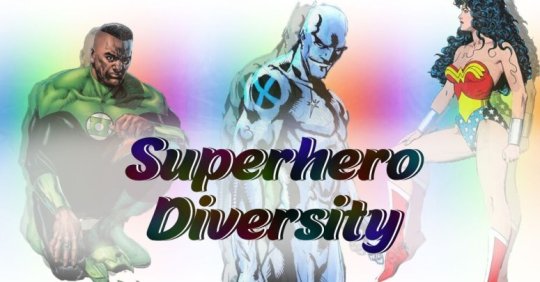
I was approached recently for my second collaboration opportunity with Quality Comix, a successful comic sales website which puts out their own editorial content alongside their marketplace. They were working on a long-form article on the challenging history of superhero diversity. The people at Quality Comix enjoyed my perspective last time on Joker and wanted a contribution on Black Panther in respond to the passing of star Chadwick Boseman for their collected piece. I was happy to oblige speaking about that movie’s vast importance. Check out your boy!

THE COMPLETE QUALITY COMIX EDITORIAL
MY FULL REVIEW OF “JOKER”


(Image: qualitycomix.com)

LOGO DESIGNED BY MEENTS ILLUSTRATED
Permalink
from REVIEW BLOG – Every Movie Has a Lesson https://ift.tt/3640leK
via IFTTT
from WordPress https://ift.tt/32XDVd1
via IFTTT
0 notes
Text
New Podcast from El’Ahrai Stanek and John Robinson: The Neon Movie Bunker — Episode 154
Psst…hey, buddy, you want a movie review show? Then step right over here and get yourself a brand new fully-loaded Neon Movie Bunker! This week, John and El’Ahrai review “The Nest” and “The Dancing Dogs of Dombrova”! So you going to listen, or what? You sit there, lecturing about our lives and so far, I have not witnessed one sign that you have any values of your own.
from The Neon Movie Bunker https://ift.tt/3iVAOrS
via IFTTT
from WordPress https://ift.tt/2RQu6qX
via IFTTT
0 notes
Text
New Written Review from Mike Crowley on You’ll Probably Agree: 10 Reasons Why ‘Blade Runner 2049’ is better than ‘Blade Runner’
If you haven’t’ seen the movie, see it then read this. No intro, let’s jump right in.

1. K is a replicant
The reveal of K’s genetic code, or lack thereof, flips everything we assume the movie will be on its head. We are learning along with K what it means to exist. Do we as humans, live like replicants? Do we obey a society that treats us like trash but breath anyways out of the fear of death? Where we viewed “Blade Runner” mostly through Deckard’s eyes who didn’t have much of a personality, K’s lack of a character is his entire purpose for existing. For K to emote is to face death.
Where Harrison Ford’s Deckard entire arc was us questioning if he’s human or not (despite what Ridley Scott unequivocally says), there’s nothing much of substance to Officer Deckard. He gets drunk, retires replicants, that’s it. Name one thing that makes Deckard standout? I’ll wait. Ryan Gosling’s Officer K goes from a machine that is dying spiritually on the inside to someone wanting to have a purpose in life. All while maintaining his composure, if perhaps too much poise for the film. Anything with a conscious can feel. Whether or not how it was made is as relevant as where you were born or what skin color you are. The importance is that you’re here.
K doesn’t seek gratitude nor affirmation. He doesn’t suffer from a narcissistic personality. All he wants is not just to be another useless piece of metal.
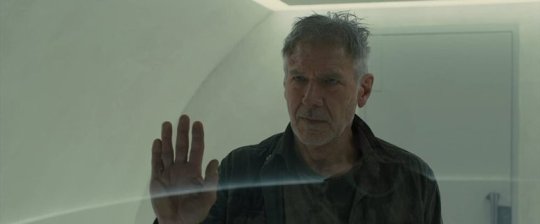
2. Deckard has depth this time
Being a daddy changes you a lot. Rick isn’t just a slouchy drunk who likes to shoot robots out of legal obligation. He’s a man who’s principles and love for forbidden things cost him his life. What kind of soul did Deckard have in the first film? Who did he care for? Please don’t say, Rachel, we all know why he was attracted to Rachel. Like Winston in 1984, Deckard rejects Big Brother for a life of pain to gain a glimmer of happiness.
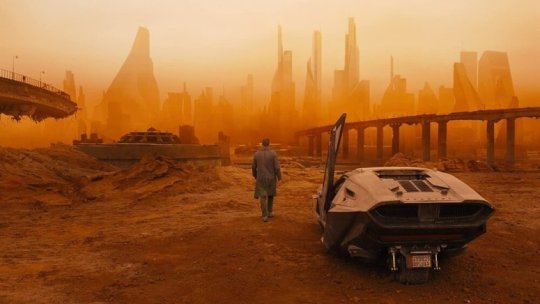
3. It’s horrifyingly relevant
Denis Villeneuve based the imagery in 2049 on a planet that has become degraded with pollution. The buildings are extrapolating enormous amounts of water into the atmosphere, the sea wall at the end of the picture will be our new Mount Rushmore, the orange Vegas is happening now. Denis Villeneuve didn’t predict the earth looking like this, but his production team was still spot on. A picture that transcends its very style, developing a look that will be discussed on its merits separate from the ubiquitous original, is a stunning achievement.
Everything isn’t dystopian because that’s the way it was in the book. It’s what will happen to us in real life, why we’d look for colonies to live on if we had the technology or funding towards NASA to do so. God help us all.
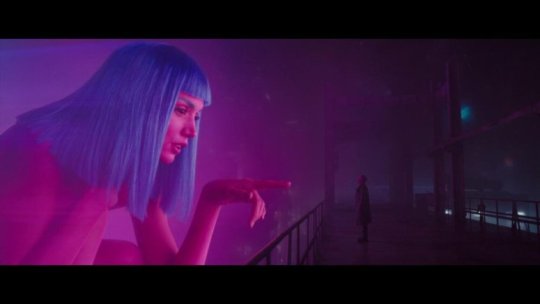
4. The love story questions the essence of relationships
The story between K and Joi further examines the meaning of love, sex, and mortality, with the two being different versions of artificiality. When the default sexed-up version of a naked Joy pops up on the screen, we are emotionally mortified. Some of us may be repulsed to observe a character we care for utilized like a thirsty Godzilla.
The towering ad tries to seduce K tempting him to buy it, rendering everything Joi said to K throughout the picture questionable. Its manipulation solidifies his final decision in life to help another man. We’re not sure if she loved him or said what it thought it wanted him to hear throughout the narrative. Possibly Joi herself didn’t know her intentions. An unusual amount of nuance and uncertainty rests in the love story. Who do we love? Why do we love? Do we love by the heart or the heart of our designers whom we don’t know?
Meanwhile, Deckard was just drunk and horny when he bashed Rachel up against the wall. Sorry, that really was all there was to their passion despite what Wallace says.

5. The movie was an honest commentary about how the world views woman
Here’s a controversial one. A lot of women were disgusted by the way they were depicted in the film. Outwardly watching the movie, I can’t blame them. I’ll let Mr. Villeneuve speak for himself. “I am very sensitive to how I portray women in movies. This is my ninth feature film and six of them have women in the lead role. The first Blade Runner was quite rough on the women, something about the film noir aesthetic. But I tried to bring depth to all the characters. For Joi, the holographic character, you see how she evolves. It’s interesting, I think. What is cinema? Cinema is a mirror on society. Blade Runner is not about tomorrow; it’s about today. And I’m sorry, but the world is not kind on women.”
Villeneuve is right. Women today are still sexualized. Even with the Me Too movement, women are continually seen as sex objects or subservient slaves in a male-dominated society. Villeneuve isn’t interested in painting a rosy picture that Hollywood does for female roles to make the audiences feel comfortable. It’s an honest reflection on who we are. What we see is what we don’t want to see, but that’s part of the honesty of cinema.
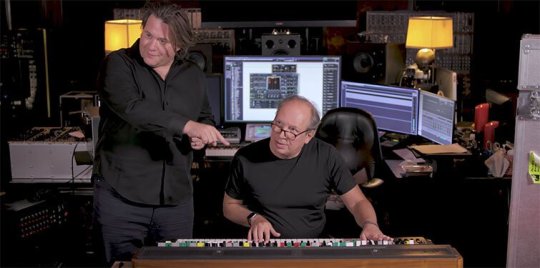
6. The score is mesmerizing
Another point in which I may face some contention. Yes, Vangelis’ score is iconic, but it only works for the era it was composed in. Much of its mixture of bleeps, blops, and wind chimes are a product of its time. A lot of emotion is missing from the score other than the opening theme and “Tears In Rain.” Hearing much of the soundtrack while on the road, I sometimes thought I was listening to something from a porno. Take a listen to “Wait For Me” in the soundtrack and tell me otherwise. Hans Zimmer and Benjamin Walfisch’s score is timeless while also paying respect to Vangelis’ synthetic use in the original. It dives into the character’s mind providing a replication of something more human than what Vangelis composed.
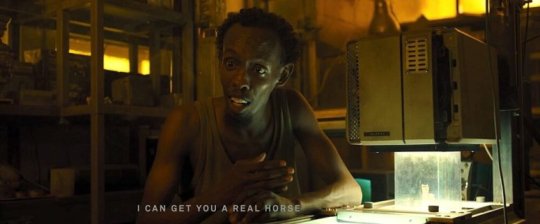
7. It thematically ties more directly to “Do Androids Dream of Electric Sheep” than “Blade Runner” does.
“Blade Runner” got the overall gist of Phillip K Dick’s novel. Replicants are scared, trying to find a way to survive as Deckard hunts them down. However, the Andies in the movie almost deserve to die. In their quest for more life, they torture and kill multiple civilians. What did the guy making the eyes do to deserve being frozen to death? What about J.R. Sebastian? He was nothing but pleasant to Roy and Pris. Did Roy eye gauge him when he was done with Tyrell?
Aside from Luv (Sylvia Hoeks), our replicants are fully rounded people. Sapper Morton is a watchful protector who was meant to be a NEXUS 8 combat medic; Joi’s true intentions come into question for herself and us. K’s inner conflict is the central core of the story. All of this revolves around the meaning of existence within a world that has forgotten about you. The introduction of Robo procreation is an evolution of Dick’s ideas, widening his notion of why life exists in the first place.

8. It doesn’t get lost in the scale
Many sequels love scope over characters. Remember “The Matrix”? Remember how they talked about Zion and all these other things we didn’t see? When the sequels brought in Zion, the focus got lost in the spectacle. “The Matrix Reloaded” was a bumbling CGI mess of Agent Smith Clones and cave orgies. “The Matrix Revolutions” was a glorified “Space Invaders” game. Shoot as many sentinels as you can before becoming overwhelmed. Amidst the sequels bumbling chaos, I missed the smaller scale of the Nebuchadnezzar crew.
The story of “2049” could have focused on the replicant uprising with thousands of robots slamming into humans. We could have gone off-world to finally see what all these other colonies we’ve heard about are like. Some have argued that the movie could have borrowed some of its source material from the later novels about replicants creating humans, so on and so forth. All of that sounds incredible in theory. In execution, you would likely get “The Matrix” sequels.
A movie that overreaches in scope, attempting to please fans by showing everything. What we got was an incredibly meaningful story that further explores the themes of the original while building upon its world without going too far. We see what’s beyond L.A. on the dilapidated west coast. The answer is not much. The film aims at minimalism over extravaganza.
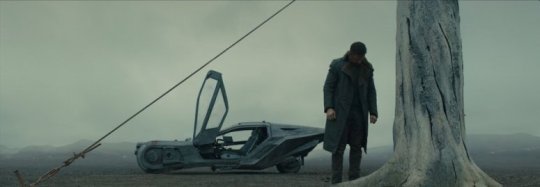
9. We’re still talking about it
After being MIA for decades, “Blade Runner 2049” isn’t forgotten. I can’t say the same for “Superman Returns,” “Monsters University,” “The Incredibles 2,” “Live Free or Die Hard,” and “Indiana Jones and The Kingdom of The Crystal Skull.” In fairness, people do talk about Indy 4, but not in a positive fashion. “Blade Runner 2049” returned to the limelight with disastrous box office results yet high accolades, even gaining the Academy’s attention. Ironically it seemed destined to live the life of its predecessor.
“2049” may have tanked because it was a multimillion-dollar art film that respected its audience’s intelligence. Maybe “Blade Runner” was too far gone amongst the public to gain an interest geared almost entirely towards comic books and Disney. I think the trailers after the reveal teaser looked too generic for my own two cents, turning me off from the film for a short while.
Here we are with Honest Trailers in 2020, making a video about a film that came out in 2017. Bloodsoaked orange skies from the headlines mention the atmosphere of this film. Somewhere, about 100 other people are writing their analysis of “Blade Runner 2049” as I type right now. Seven years from now, we’ll be talking about why the world is still like “Blade Runner 2049.” Villeneuve made a timeless sequel to be remembered.
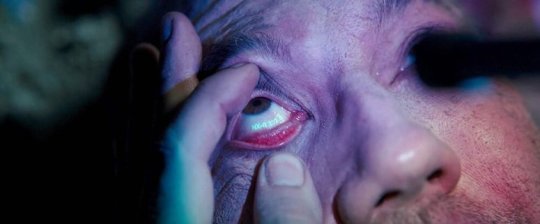
10. It’s better than the first film and one of the best films in the last ten years
Here’s why you’ll probably agree with this one when you put your pitchfork down. Remove your nostalgia goggles. I know it’s hard to do, please, trust me. Look at the points I made above. Think about how ironic the love story is to our lives. The layers of meaning behind K’s existence is lightyears beyond the featureless Rick Deckard. The picture isn’t flawless. Niander Wallace is spectacularly corny in his scenery-chewing grim monologues. Dr. Eldon Tyrell had some ambiguity regarding the morale of his intentions. For that, I’ll give the original the benefit of my doubt. I understand Ryan Gosling was cast to be intentionally deadpan, but it’s okay to emote once. His distant stare in all of his other performances made it difficult for me to discern myself from the actor’s rather dull persona.
With this said, “Blade Runner 2049” understands cinema. Its atmosphere is why we venture into a dark room that takes us to a different place. Denis Villeneuve’s masterful follow up is one of the most orgasmic cinematic experiences I have witnessed in the last ten years that demands a re-screening in 2022 when theatres reopen at an entirely safe capacity. The style doesn’t overshadow its substance, which is far richer in detail than the original without grasping at blatant metaphors. “Blade Runner 2049” is slow cinema at its finest, letting us into the character’s heads, knowing when to be quiet and when to be loud.
Like “The Empire Strikes Back,” not everyone appreciated the movie at first. Time has been incredibly kind to it, though. I wish the Academy recognized “Blade Runner 2049” beyond its technical marvels in 2018. I suppose it wasn’t the type of picture that catches Oscar voter’s eyes. But it has acquired the audience’s to this day. Now, if you could just look up and to the left for me?
from you’ll probably agree website https://ift.tt/3kxHs7O
via IFTTT
from WordPress https://ift.tt/3kG03i7
via IFTTT
5 notes
·
View notes
Text
New from A Reel of One’s Own by Andrea Thompson: ‘Residue’ is a poetic exploration of a neighborhood under gentrification
By Andrea Thompson
The film “Residue” is about as quiet as a silent scream. To watch it is to contemplate another cry of pain in plain sight, Edvard Munch’s famous, now iconic 1893 painting The Scream. You know the one. A strange, barely human figure on a bridge, clad in black, holds his hands up to his face while opening his mouth in a silent cry while the natural landscape seems to ache with him, while a couple walks behind him in the distance, seemingly calm and oblivious.
Like most works of art that have been embraced by the wider culture, we tend to see it without considering it. And why not? It’s gone on to inspire everything and everyone it seems, from other artists, whether it’s as homage, parody, or unconscious influence, to ads, and equally iconic slasher villains, even getting its own emoji. The ironic result is a failure on the part of even the most observant of us to truly contemplate it and the pain that it clearly conveys, which is as intense as a…well, you get the idea.
Likewise, Merawi Gerima, the son of legendary L.A. Rebellion filmmaker Haile Gerima, is screaming into the (gentrified) void in his autobiographical feature debut “Residue.” And he’s hardly alone, even though Jay (Obinna Nwachukwu), his clear surrogate, almost seems about to choke on his loneliness at times. For Jay, who returns from California from whence he fled to a D.C. neighborhood that’s about as far from the halls of power as you can get, the question isn’t whether you can go home again as whether home will exist for much longer.
From the moment Jay arrives at his old stomping grounds with the intent to make a film about where he grew up, he is shocked to discover that he barely recognizes it, as it has been gentrified to such a degree that the steadily encroaching whiteness threatens to choke him the instant he arrives. In the space of a few minutes, he’s asked to turn his music down and not to double park, with the added threat of a call to the police thrown in. And to have a nice day of course.
It’s a pattern that will surely repeat and does, since Jay must continually restrain himself when white residents inflict various aggressions, whether it’s allowing their dog to relieve himself in his mother’s yard, then cursing at his mother, and crossing the street when they see him. Of course, aggression doesn’t belong solely to white people in this remarkable film, as Jay’s various friends can attest to, and all bear the scars of their own traumas, whether from drugs, jail, police harassment, or gun violence, or often, a harrowing mixture of the many forces that work themselves into the fabric of their lives. Some can’t even be found at all, as Jay discovers to his distress when he tries to learn the whereabouts of his childhood best friend Demetrius (Julian Selman), only to meet with evasion and distrust from a community that constantly reminds him of his departure.
Gentrification is less a topic than a force as capitalism has continued to loose its bonds and devour those low income enough to be caught in its path. Gerima’s approach to it is less “Blindspotting” than “The Last Black Man in San Francisco,” with its quieter tone, although it takes a far more experimental approach to its subject matter. It can be jarring and confusing, as various flashbacks and shaky cam mingles with childhood memories both fond and violent, but most of the time it’s pure poetry, or at the very least, creativity as Jay becomes the camera, at one point literally, as he observes the people and place he no longer feels fully part of.
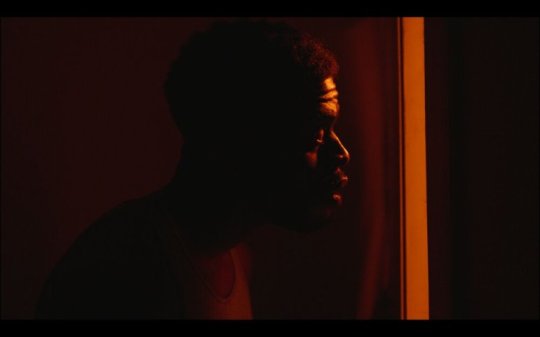
Yet for a film that’s so much about isolation, Gerima’s intimate approach is what shines brightest, whether through the use of local non-actors or his own knowledge and history. Gerima saves his most insidious condemnation of gentrification for the film’s final minutes, when the smiling ignorance of the area’s various white residents come to a head, as they casually discuss how the area has been “cleaned up,” and even more sinister, renamed.
As Antoinette, another unruly character who is punished for her inability to conform, noted in the novel “Wide Sargasso Sea,” names matter. Be it a person or a city, “Residue” is a kind of poetic depiction of what essentially constitutes a literal erasure of an identity to fit the desires of the affluent.
Grade: A-
from A Reel Of One’s Own https://ift.tt/2FZos36
via IFTTT
from WordPress https://ift.tt/33LDpOA
via IFTTT
0 notes
Text
New Episode from CinemaJaw: CinemaJaw 487, Tony Fitzpatrick – The Social Dilemma, Antebellum – Fall Movie Preview
Reviewed: The Social Dilemma, Antebellum
Top 5: Fall Movie Preview
Trivia: Dream Movie Trivia
Sponsored by: Overcast
The leaves are turning orange. Time for pumpkins, apples, jeans, boots, and football. It’s time for CinemaJaw’s annual Fall Movie Preview!
Joining us is a guest who has long been on our wish list.
Tony Fitzpatrick is an actor, artist, and Chicago icon. He began seriously drawing with colored pencils on slate boards in a storefront gallery in the town of Villa Park, called The Edge. He worked by day and bartended at the bar across the street at night. During that time, he developed separate friendships with Chicago radio personality and bluesman Buzz Kilman and film director, Jonathan Demme. Demme and Kilman were longtime friends, and the three became close. As a result, Tony has appeared in a few of Demme’s films and other films as well.
Tony’s most recent role is in a film entitled Dreaming Grand Avenue, which also stars Jackson Rathbone (Twilight), Andrea Londo (Narcos), and Wendy Robie (Twin Peaks), Dreaming Grand Avenue is a journey through unresolved losses and haunted pasts to uncover the potential of dreams yet to be realized. Filmed entirely in Chicago, a city with big dreams of its own, Dreaming Grand Avenue was written and directed by Hugh Schulze and produced by NewCity’s Chicago Film Project (Signature Move, Knives and Skin).
The cast and crew of Dreaming Grand Avenue are excited to be attending their world premier Wednesday, September 23, 7:00 PM – 10:00 PM CDT at the ChiTown Movies Drive-In (2343 South Throop Street), with a second 10pm showing recently added!
Check here for tickets to the premier that will feature writer/director and cast appearing for red carpet and live Q&A!
from CinemaJaw https://ift.tt/3cgHfTO
via IFTTT
from WordPress https://ift.tt/2ZVbqLc
via IFTTT
0 notes
Text
New from Al and Linda Lerner on Movies and Shakers: Antebellum
This movie doesn’t work on multiple levels. Instead of paying homage to the Black Lives Matter Movement the plot devolves into a disjointed, cartoonish, blood-lust revenge story. It’s preposterous, outrageous and some of the acting is just over-the-top. Unfortunately, long, languishing shots of beautiful plantation visuals can’t make up for the time line confusion and the brutal violence of slavery in this film.
Jonelle Monae is a multi-talented, singer/songwriter who has established herself as an actress in Moon Light and Hidden Figures. But this is different. It’s 12 Years a Slave plus Gone With the Wind from the slaves’ point of view and a horror thriller a la Jordan Peele’s Get Out and US. It’s painful to watch and even more painful to understand.
This is the directorial debut for Gerard Bush and Christopher Renz who also also wrote the script. The opening scene is a 8 minute tracking shot well planned by Cinematographer Pedro Luque Briozzo (Jacob’s Ladder, Extinction) to set the scene. It shows the dichotomy between the Black slaves with Confederate soldiers and a White family at their lush plantation. There are a couple of wobbles but it is impressively long leading up to the White slave owners’ mansion. The slaves are being brutalized to keep silent as they pick cotton and the film just doesn’t get any better from there.
Eden (Monae) watches in silence but is hand-picked, branded slave of the man she’s told simply to call Him, (Eric Lang). The first 50 minutes at the plantation setting puts the audience squarely in the horror of slavery with repeated instances of torture and death. Curiously, the cotton picked by the slaves is burned in front of them. That’s a clue that there’s more to this place.
We’ve also seen a little girl and her Mother, the wife of the White owner of the plantation. Jena Malone (Donnie Darko, The Neon Demon) is scary from the start. She was given book “They Were Her Property” by Stephanie E. Jones-Rogers which helped her characterization. White women during Civil War times were often more ruthless than men and got rich owning and trading slaves rather than land.
About 55 minutes in, Eden suddenly wakes up from a disturbing dream on the plantation and is in a rich, urban setting. Eden is now Veronica, with her ideal family. Her little girl is perfect and so is her husband. She is a quasi Oprah and a renowned therapist, adept at yoga, traveling to speak at a conference in New Orleans about her new hot book. She gets a weird vibe from the hotel desk clerk, but is all happy when she meets up with friends and colleagues, Julia (Kiersey Clemons) and Dawn, (Gabourey Sidibe- Come as You Are, Precious) who just want to go play together.
When this diverse trio of females gets to the posh restaurant and are put at an undesirable table by the kitchen, Dawn goes rogue on management to get a suitable table. Sidibe is a good actress, but here she plays so over-the-top and phony, especially when she dresses down a man who sends over a cheap drink to meet her. We never see his face, nor that of their waiter who she also berates.
The film cuts Elizabeth (Malone) in a slinky red dress and spike heels walking slowly down a hotel corridor where she turns on fake Southern charm to get a maid to let her into Veronica’s room. There, she purposefully pushes her possessions around, puts on Veronica’s lipstick and smiles. The score interjects a sense of foreboding throughout the film composed by Roman GianArthur and Nate Wonder.
Veronica decides not to go partying with the girls after dinner and gets into the limo to go back to the hotel. Big mistake. She’s screaming in trouble, and even though her buddies go by in a car next to her, they’re too busy singing Lizzo’s “Juice” song to hear her.
Now, she’s at the plantation, in old Civil War Confederate digs being called Eden. Her desperate struggle to survive and escape kicks in, even showing off impressive yoga moves. The last chapter is the ultimate good vs. evil. She magically transforms into a steely-eyed martial arts expert, a champion equestrian and fearless rampaging revenger. There’s gruesome bloodshed in what becomes more horror than thriller. The ending is contrived and unsatisfying, and will probably make you groan.
Writer/Directors Bush and Renz put in a lot of effort dreaming up this plot which probably sounded better on paper than executed in this film. We were excited to see what Monae and Malone would deliver. But the warped timeline confused this sordid plot. The film quotes William Faulkner, “The Past is never dead. It’s never past.” But on this one, take a pass.
Lionsgate 105 Minutes R
youtube
The post Antebellum first appeared on Movies and Shakers.
from Movies and Shakers https://ift.tt/3cgaE0v
from WordPress https://ift.tt/33MH5PZ
via IFTTT
0 notes
Text
New from E-Man’s Movie Reviews by Emmanuel Noisette: John David Washington on ‘TENET’ (and our hope for Green Lantern)
John David Washington is the new Protagonist in Christopher Nolan’s original sci-fi action spectacle “Tenet.” Armed with only one word—Tenet—and fighting for the survival of the entire world, the Protagonist journeys through a twilight world of international espionage on a mission that will unfold in something beyond real time. During … [Read More]
The post John David Washington on ‘TENET’ (and our hope for Green Lantern) appeared first on The Movie Blog.
Don’t want to miss future reviews and contests?
Enjoyed this review? Share it and let me know what you thought.
Click Here to join our weekly email list. One email, every Friday, to get my latest reviews. Don’t forget to follow me at @EmansReviews
from E-Man’s Movie Reviews https://ift.tt/3cfOYBF
via IFTTT
from WordPress https://ift.tt/3iNL7OC
via IFTTT
0 notes
Text
New from Don Shanahan on 25YL: Cuties Displays Its Tangible Negatives With Powerful Worth
For this critic, there are two telling scenes among many that stand out in Migonnes, now better known as Cuties, that typify its challenge and its caution. They are not among the headlining, fire-branded clips of its maligned Netflix marketing. Nevertheless, the jarring tension is ever-present. In a scene in the first half of the […]
The post Cuties Displays Its Tangible Negatives With Powerful Worth appeared first on 25YL.
from Don Shanahan – 25YL https://ift.tt/2Hd1mGV
via IFTTT
from WordPress https://ift.tt/2ZUSIn7
via IFTTT
0 notes
Text
New from Emmanuel “E-Man” Noisette on The Movie Blog: John David Washington on ‘TENET’ (and our hope for Green Lantern)
John David Washington is the new Protagonist in Christopher Nolan’s original sci-fi action spectacle “Tenet.” Armed with only one word—Tenet—and fighting for the survival of the entire world, the Protagonist journeys through a twilight world of international espionage on a mission that will unfold in something beyond real time. During … [Read More]
The post John David Washington on ‘TENET’ (and our hope for Green Lantern) appeared first on The Movie Blog.
from Emmanuel “E-Man” Noisette – The Movie Blog https://ift.tt/33I5Dd3
via IFTTT
from WordPress https://ift.tt/3hMSzYW
via IFTTT
0 notes
Text
New from Don Shanahan on 25YL: Antebellum Is the Discrepancy Between a Premise and a Good Idea
Twists and turns be damned, Antebellum is a potent illustration of the discrepancy between a premise, the intellectual seed of every creative film, and what could simply be called in the end “a good idea.” Premises are catalysts that pique interest and corkscrew typical conventions to such a degree that the goal is to get […]
The post Antebellum Is the Discrepancy Between a Premise and a Good Idea appeared first on 25YL.
from Don Shanahan – 25YL https://ift.tt/3hIQ3CV
via IFTTT
from WordPress https://ift.tt/32LrHEo
via IFTTT
0 notes
Text
New from Jeff York on The Establishing Shot: “ENOLA HOLMES” AIMS FOR YA AUDIENCES BUT SHOULD PLEASE SHERLOCK FANS
Original caricature by Jeff York of Millie Bobby Brown, Henry Cavill, Sam Claflin, and Louis Patridge in ENOLA HOLMES. (copyright 2020)
Hardcore fans of Sherlock Holmes on the page or screen may find it difficult to embrace ENOLA HOLMES, Netflix’s new entry into the mix premiering September 23. The new film reimagines much of what Sir Arthur Conan Doyle wrote when he created his world-famous consulting detective in 1888 and continued through four novels and 56 short stories. Similar grumbles greeted author Nancy Springer’s YA adaptation when she first wrote about Enola in 2006, her newly imagined 14-year-old sister to Sherlock. Despite the protestations, Springer’s take became a hit, even earning an Edgar Award nomination for Best Juvenile Mystery. Netflix’s adaptation does that story proudly and manages to honor Conan Doyle too. It’s not perfect, but it’s rollicking and well-made, setting up what could be a fun franchise for years to come.
Interestingly, ENOLA HOLMES follows the blueprint of Guy Ritchie’s revisionist take on SHERLOCK HOLMES back in 2009 even more than Conan Doyle’s original stories. Ritchie’s film starred Robert Downey, Jr. as an uncouth, unbridled Bohemian version of the genius rather than the disciplined English gentleman imagined by the author. That’s how Enola is played too. Millie Bobby Brown, the breakout star of Netflix’s STRANGER THINGS, plays the younger sister of Sherlock (Henry Cavill) and Mycroft (Sam Claflin) by at least two decades. She’s a brainiac, just like them, but she’s also a surly teen, a mix of a tomboy, smart-ass, and rabble-rouser.
Raised to be fiercely independent by her single mother (Helena Bonham Carter), Enola blanches when her brothers want to pack her off to a boarding school after mom disappears. Enola doesn’t believe that mumsy would abandon her and is intent on solving the mystery. Enola’s brothers are stiff, British prigs, however, and have no time for her petulance. She defies them, the first of many times in the story, and runs away from her country home to embark for London looking for their missing mom.
But as she’s about to embark toward the big city, aided by some clever clues her mother left behind for her in illustrations of flowers, Enola encounters Lord Tewksbury (Louis Partridge), a fellow teen runaway. He’s on the run too from a strict, rich family, and Enola helps him escape via train. The two forge a tempestuous relationship in the telling, one the film wisely doesn’t ladle with too many romantic yearnings. Enola even continually saves the boy from a thuggish fixer named Linthorn (Burn Gorman) who is bent on killing him, getting into a number of tussles with the brawler on the cobblestone streets. Again, in shades of Ritchie’s take, Enola here is just as much a fighter as Robert Downey Jr.’s version.
When she’s not fighting feistily, Enola searches for her mom via clues in the local papers. That “A story” continues to crisscross with the “B story” of Tewksbury, with yet a third story chronicling Enola’s efforts to evade capture by her brothers. It’s a lot of narrative for one outing, and often the intellectual elements get pushed to the background. Still, while using her fists and feet to kick away Linthorn, Enola manages to use her wits enough to come off more like Sherlock than Katniss Aberdeen.
Jack Thorne’s screenplay adaptation keeps us vested in Enola by having her consistently break the fourth wall and share her innermost thoughts. The device manages to give Enola a FLEABAG quality as well, sharing all things cheeky a la Phoebe Waller-Bridge. Each quip rolls off Brown’s tongue with relish and she’s a hoot throughout. The young actress acquits herself nicely too in all the stunt work, though it is at times unseemly to watch her character get pummeled by fist-clenching men.
In fact, the worst part of ENOLA HOLMES is how violent those scenes are played, full of blood, kicking, and gouging. Enola needs to be in danger, yes, but not bandied about like a dog’s bone. Director Harry Bradbeer adroitly imbues his film with a Ritchie-esque energy, not to mention similar camera tricks and a mix of titles and art cards, but did he have to copy the same over-the-top violence favored by the director as well? This film is still primarily aimed at YA audiences, not the R-rated moviegoers seeking out SNATCH and ROCKNROLLA. Bradbeer would be wise to behoove the coming sequels with fewer beatdowns of the title character.
Where Bradbeer’s direction shines brightest is in the development of the characters. There are memorable roles for a half dozen supporting players, and they register thoroughly. Particularly good is Fiona Shaw in her sly and subtly done turn as the schoolmarm tasked with taming Enola. Bradbeer also gets a subtle and moving performance out of Cavill, certainly the most sensitive and introspective Sherlock ever put on film. He’s physically all wrong for the part, what with his bulging muscles and floppy matinee idol hair, but Cavill does capture the slyness of the detective with great skill. He may be a million miles from Sidney Paget’s legendary Holmes illustrations, but he captures the pathos of Holmes better than any actor since Jeremy Brett.
In fact, to those who may too easily dismiss this film for upending so much Holmes tradition, aiming more for YA audiences than aficionados, I’d argue that in many ways this effort honors the original stories as vividly as most entries into the oeuvre. The Victorian period is gorgeously recreated and evident in every prop, setting, and costume. The sexist caste system is clearly in play, as it always was in Conan Doyle’s original prose. Most importantly, Enola is a pickled pill just like the original Sherlock. In fact, her stubbornness, ways with a disguise, and mile-a-minute delivery, all expertly done by Brown, are wholly in sync with the source material.
Perhaps the female empowerment message is driven home rather repetitiously throughout, but reminding young women watching that they need not follow the patriarchy to succeed, nor strive to be extravagantly feminine to be female, is an admirable lesson. Women who speak up, strive for what they want, and win playing the game their way, these are not “nasty women,” they’re role models. Here’s hoping one like Enola Holmes continues to thrive in both literature and onscreen.
from The Establishing Shot https://ift.tt/2FSZWk6
via IFTTT
from WordPress https://ift.tt/3kCeKmx
via IFTTT
0 notes
Text
New from Every Movie Has a Lesson by Don Shanahan: MOVIE REVIEW: Antebellum

ANTEBELLUM— 1 STAR
Twists and turns be damned, Antebellum is a potent illustration of the discrepancy between a premise, the intellectual seed of every creative film, and what could simply be called in the end “a good idea.” Premises are catalysts that pique interest and corkscrew typical conventions to a degree where the goal is to get a potential audience member to declare “I gotta see that.” Shock value sells. However, even the ballsiest premises only work with storytelling and filmmaking execution that can justify the how and, eventually, the why. Those premises become “good ideas.”
On so many levels, Antebellum and its premise were not anywhere close to good ideas. With every pendulum swinging between power and abuse and between dominance and defiance, this wannabe mindf–k movie does not achieve enough of that aforementioned justification. Even with a determined performance from Janelle Monáe, this is a distressing and unnecessary inquisition with no solid answers.
Now, something that can help a premise is ambiance. With an impressive unbroken tracking shot from Don’t Breathe cinematographer Pedro Luque Briozzo, Antebellum opens to flaunt its production value. Lacing off the ground above cotton fields and through shanty buildings, the camera captures a familiar landscape of uniformed white finery forcing servitude on ragged Black prisoners characterized in the stellar costumes of Mary Zophres (La La Land). The disturbing musical notes from frequent Monáe collaborators Nate Wonder and Roman Gianarthur choreograph the unnarrated acts of oppression on screen and peaks when a noose hits a neck. We’re there and it’s ugly.
LESSON #1: READ THE ROOM— At this point, a level head asks, goodness gracious, are we still making fictionalized slavery movies and putting that violent cycle on screen again for the umpteenth time? Unless the future comeuppance is satisfying and/or hammers home a greater purpose, why continue to perpetuate this wretched wringer? As this lesson commands, is now a good time for that in this present era? Who’s clamoring the “I gotta see that” cheers for this?
Here in this established setting of a plantation commandeered by Confederate soldiers, Eden (Monáe) is a field hand that has been disciplined into silent submissiveness by the ranking officer (TV star Eric Lange), his vicious top lieutenant (Jack Huston), and his haughty and heinous wife (Jena Malone). Those in control preach and speak of heritage and territorial inheritance. Escape attempts have only made Eden’s punishments and labor worse. However, with the close of the eyes and the wisk of a near-match cut one night, Eden awakens to be an entirely different person.
LESSON #2: LIBERATION OVER ASSIMILATION— Like wiping away a bad dream, Monáe is also Veronica Henley, an influential speaker and successful writer of social activism against racial patriarchy. Her work looks to break the cycle of inequity with liberation over assimilation. She is a married mother of one and lives well in a present day that still slights her. This outspoken and confident force is the kind of woman that warns how anger and fear are not what they appear to be while she (and the film) quote William Faulkner. Veronica couldn’t be any more different than the defeated Eden.
Written and directed by the creative team known as Bush and Renz (Gerard Bush and Christopher Renz) making their feature film debut, Antebellum dangles a grand ploy to connect Eden to Veronica. The pontifications of this psychological thriller mean to call out and contort the troubling ethnic and societal parallels between the present and the past. That’s all the premise lacking a clever or keen execution. When the swerves hit, preposterousness obliterates cleverness.
The best Antebellum can muster is the coin-flip anecdotes of “our ancestors haunt our dreams to see themselves forward” and “the unresolved past reeks havoc on the present.” They are traded by a tribe of girls, including Veronica and two besties (mouthy Precious star Gabourey Sidibe and token buddy Lily Cowles), before a night of elegant drinks. What is weak foreshadowing could have been and should have been shattering truths.
LESSON #3: WHAT’S NOT A GOOD IDEA— The height of those champagne flutes was the maximum gravity given to those potential cornerstones for drama and suspense. Too much is spent on the brutality instead. Antebellum tears down a promising icon of Black success into another degraded victim launched into a gauntlet of misogynistic torture. That’s not a good idea. Anything coming out of an ordeal like that is more of a damage and a disservice than something compelling or of consequence.

Permalink
from REVIEW BLOG – Every Movie Has a Lesson https://ift.tt/32HFQCo
via IFTTT
from WordPress https://ift.tt/33Ip2uh
via IFTTT
0 notes
Text
New from A Reel of One’s Own by Andrea Thompson: ‘Antebellum’ is a disappointment of historical proportions
By Andrea Thompson
This movie should not be this bad this movie should not be this bad this movie should not be this bad this movie should not be this bad this movie should not be this bad this movie should not be this bad this movie should not be this bad this movie should not be this bad this movie should not be this bad
Forgive my attack of insanity. But I have seldom seen a film that knows how to do so many things so well…except for what it’s trying to do most. “Antebellum” opens exquisitely, on a southern plantation we’ve seen so many times before. It’s quite actually clever in how it shows us exactly why we return to such settings, which in many ways contain such beauty.
It’s not exactly a new approach, yet it still couldn’t be called common, in film at least. In Toni Morrison’s “Beloved,” Sethe recalls Sweet Home, the farm that birthed such horrors, marveling at how such things could coexist. “It never looked as terrible as it was and it made her wonder if hell was a pretty place too.” The setting in “Antebellum” seduces in much the same way. Just try not to appreciate the beautifully lush landscape, especially when it comes with an adorable little white child in a yellow dress bringing flowers to a mother who is all smiles and benevolence as she gazes down at her in 19th century clothing which seems perfectly suited to a time and place that seems to cradle them in a gentle embrace.
Then “Antebellum” turns its gaze deeper, or rather, just past them, to the soldiers, and to those they and these supposedly beatific inhabitants have absolute power over, the enslaved who make the comfort we’ve just seen possible. It’s also the beginning of many dashed hopes, since things pretty much start going downhill after that. But we’ll always have those two minutes.

Lionsgate
“Antebellum” is clearly trying to make a point about how slavery’s violent, brutal past is lurking around every corner in our so-called enlightened, modern world. If only it showed any interest, any at all, in delving deep and exploring just how shockingly adaptable hatred can be as it continues to dehumanize and twist our perceptions of each other. But “Antebellum” would rather inflict brutality after brutality on Black bodies to prove its point, especially on Eden (Janelle Monáe) after her attempt to escape fails.
Monáe has done (and continues to do) fantastic work as one of our great modern artists before she branched out into acting, resulting in some truly incredible performances, such as on the series “Homecoming” and other excellent, mainly supporting roles in films as wide-ranging as “Moonlight,” “Hidden Figures,” and “Harriet.” She deserves better than the thankless one she has here, where suffering upon suffering is inflicted on her, as if we needed it to realize the horrors of slavery.
If there is any redemptive quality in “Antebellum,” it’s due to Monáe’s awe-inspiring skills as an actress, which are on full display as the camera lingers on her endlessly expressive face, not the violence itself, so we at least feel her pain throughout the entirety of the movie’s runtime of ill-advised (to say the least) choices, which includes branding, miscarriages, burnings, rapes, shootings, and other aggressions she and various Black characters suffer.
Even when the twist is revealed, and we see just what the connection is between Eden and her modern counterpart Veronica Henley, who is an extremely successful author with a loving husband and young daughter, it only makes the movie’s flaws that more apparent. And baffling. A good premise doesn’t necessarily have to be plausible to be horrific, as “Get Out” proved. But since “Antebellum” has only shown us the consequences of its scenario, with no true connection to our modern world, there’s no real emotional grounds for horror, resulting in the same lack of empathy it accuses the various white villains of.

Lionsgate
Said villains, the most notable of which is Jena Malone as a white feminist from hell, are also given no depth or exploration whatsoever, leaving us to hate them for the evil they inflict while ironically reassuring white audiences how safely removed they are from such deeds. Malone’s would be laughable if she didn’t channel pure viciousness so well, even as she’s saddled with a cartoonish southern accent and predictably icy persona. This has long since ceased to be edgy, given that we’ve been forced to acknowledge how white women weaponize their privilege on behalf of white supremacy. It’s surely no accident that as the villains begin to be punished, the most sadistic is reserved for Malone. Not that it even compares to what Monáe has had to endure.
When the dust has settled, there is likewise no hint of the greater conspiracy/movement that the movie has hinted at, and we only get the comfort that such cruelty has at least ceased…for now at least. What another, final letdown for a movie that clearly seeks to hold us, and history itself, accountable.
Grade: D
from A Reel Of One’s Own https://ift.tt/3mCxfc2
via IFTTT
from WordPress https://ift.tt/2RHOc6J
via IFTTT
0 notes